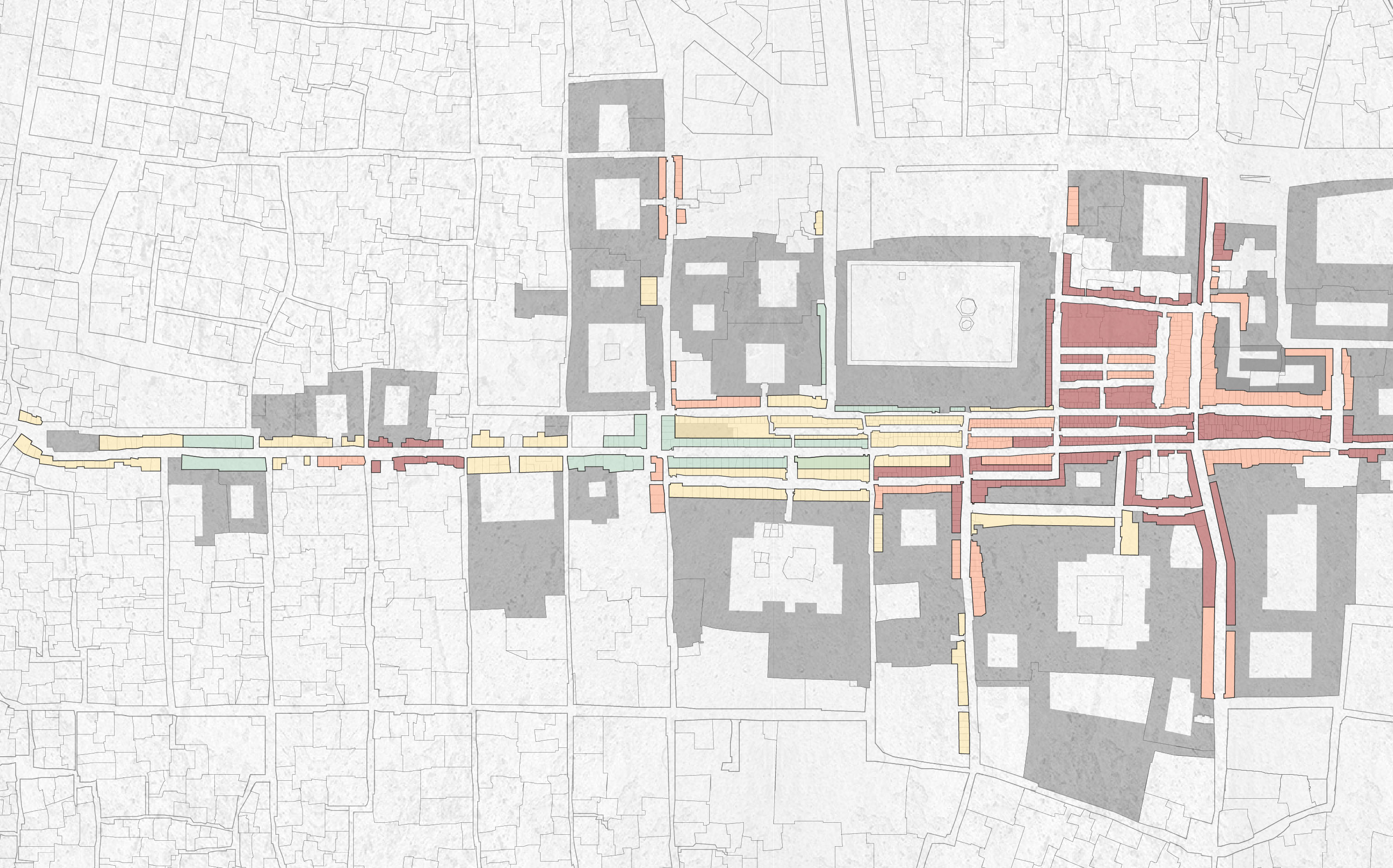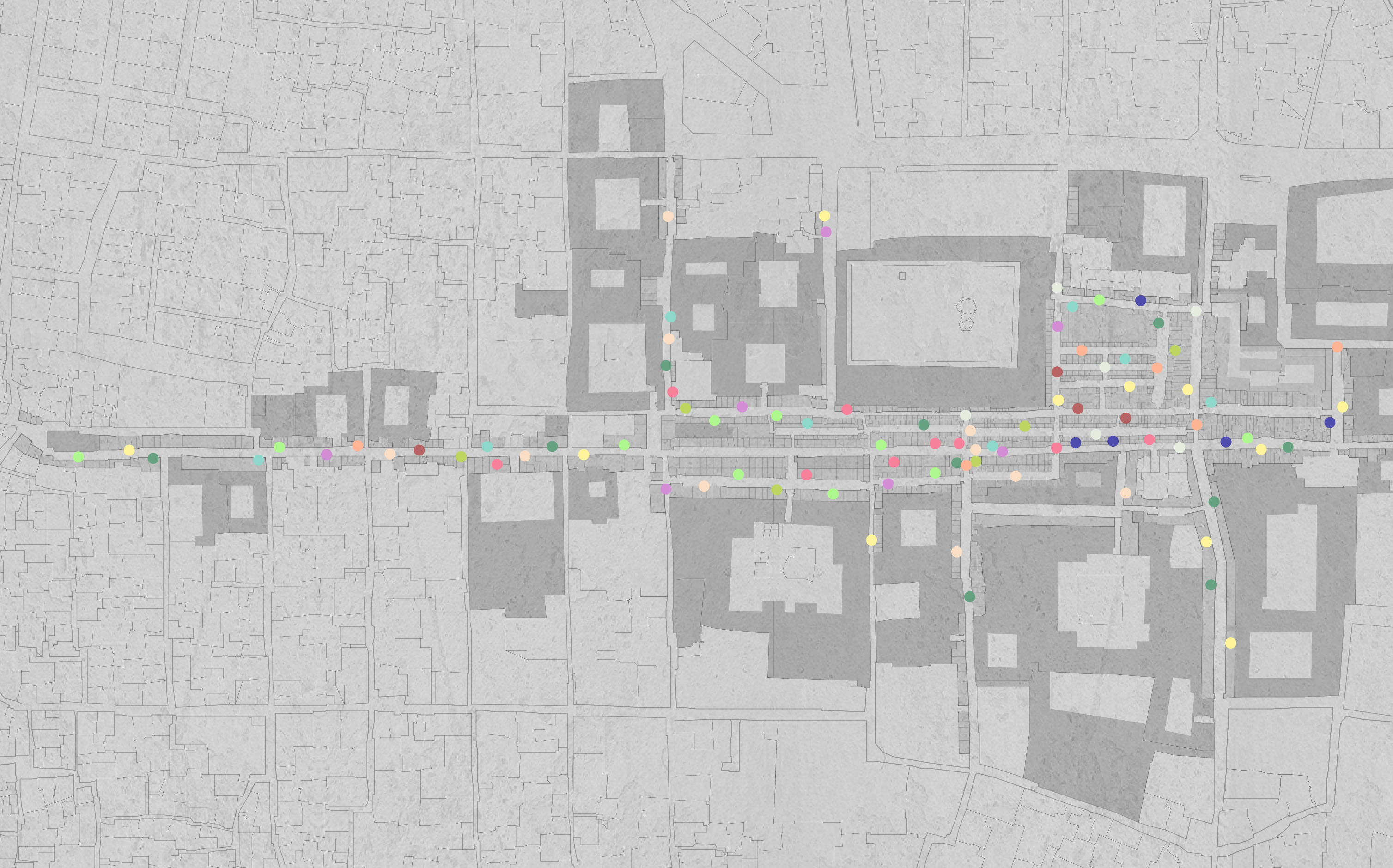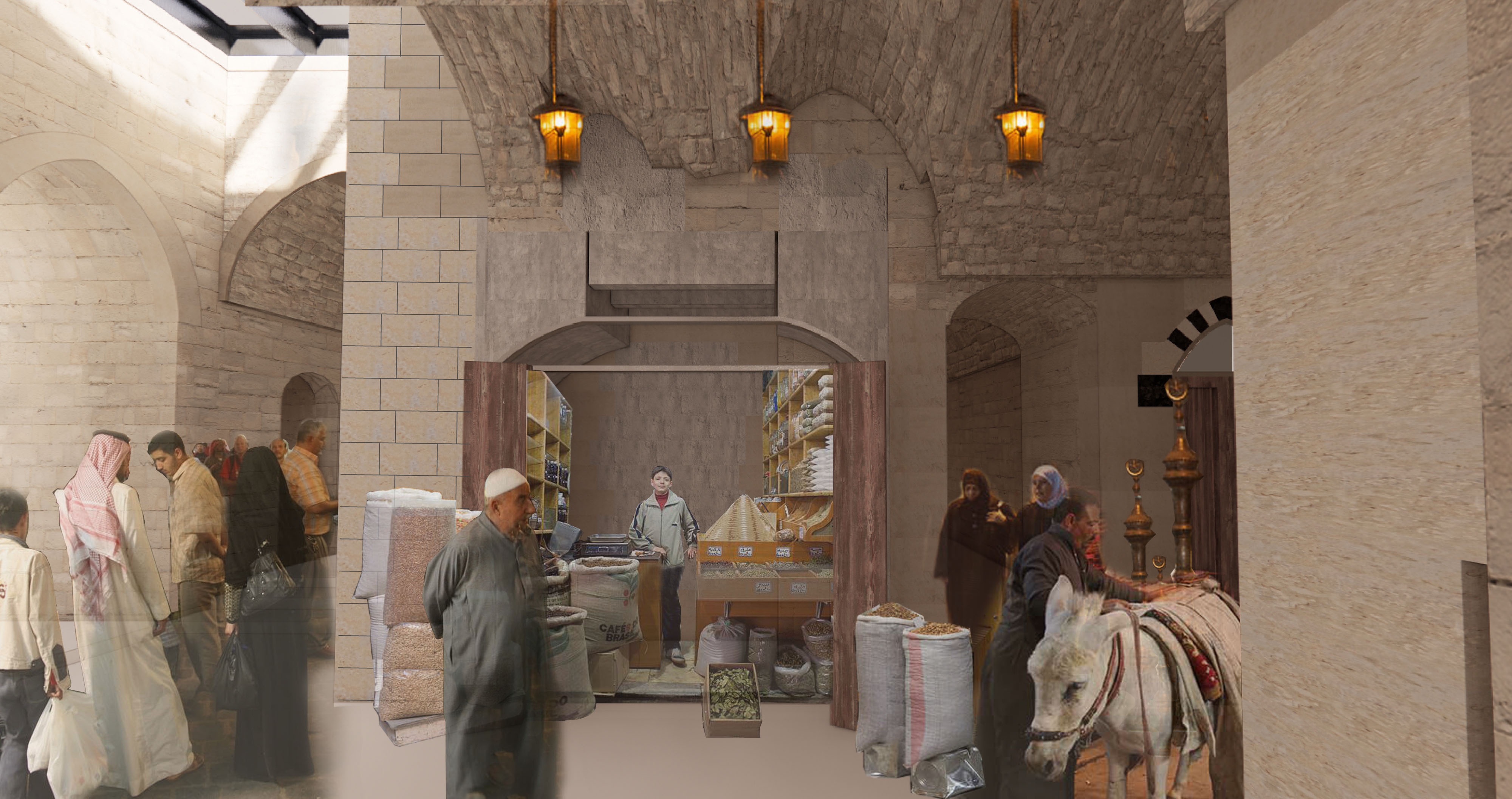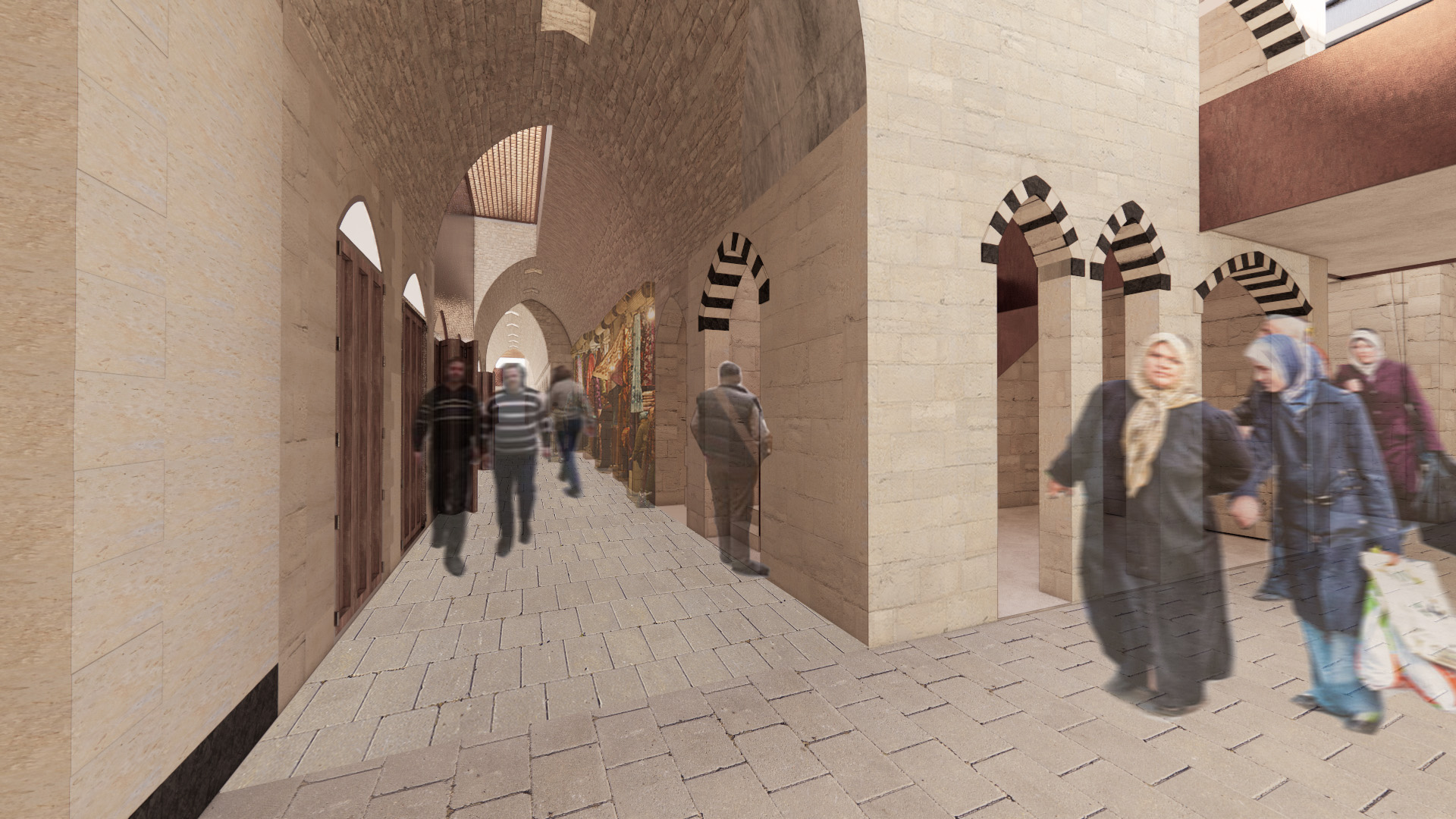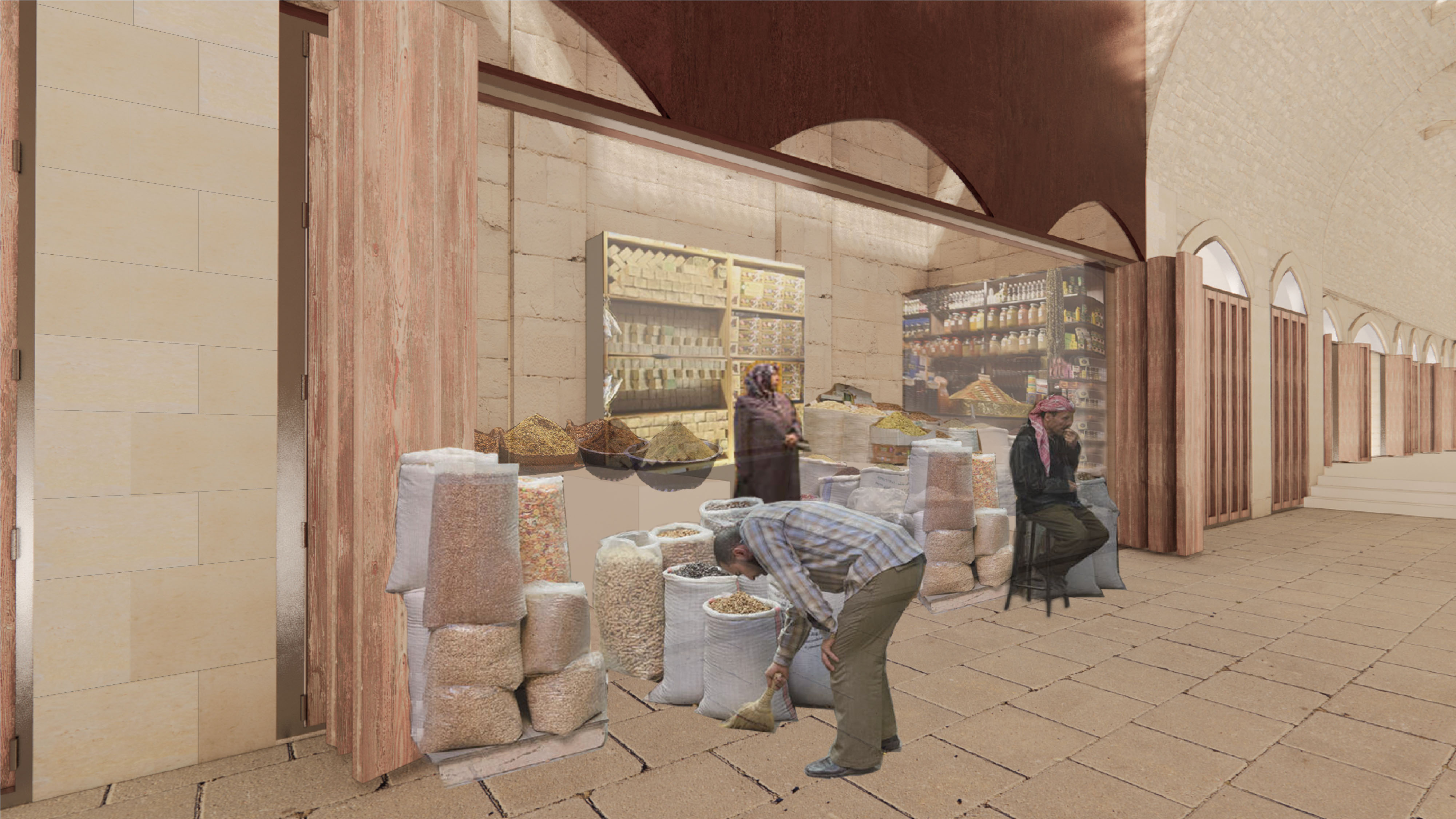MASTER OF ARCHITECTURE
Yara Ragab—ARCC King Medal
![]()
Yara Ragab—ARCC King Medal

About the Award
Acknowledging innovation, integrity, and scholarship in architectural and/or environmental design research.
There are several factors that contribute to place-making, architecture plays a role in reflecting people’s sense of belonging and identity. When conflicts arise, architecture inevitably suffers in a physical manner, impacting people’s lives, and leading to the loss of the cultural essence of a place. The physical act of destruction struck several Syrian cities during the long-lasting war. In Aleppo, Syria’s second-largest city, much of the old historic quarter has been destroyed. Currently, it is in the post-war recovery phase, where rehabilitation projects have started to take place. This thesis explores a theory of application as a guideline for critical interventions in the ancient city of Aleppo’s Al-Madineh souk complex, through means of reconstruction and preservation. By tackling intentionally damaged cultural heritage, considering the traditional elements and spaces that allow for the continuity of intangible qualities, as well as enhancing the functional spatial qualities, it proposes how to achieve contemporary solutions respecting local heritage. Souks are a source of economic prosperity, cultural heritage, and a place of communal engagement. Through integrating a sense of familiarity, war-torn spaces can be revisited and reconstructed as a method of recovering Syrians’ livelihoods and sense of identity in a place.
The methodology of application developed in the thesis aims to cater to and complement the existing traditional material and immaterial qualities found in Aleppo’s souk complex. The overall response to the destruction present re-envisions the heritage network through a dialectic approach, whether that be through reconstruction to enhance elements, or through explored means of preservation and restoration, based on the various degrees of damage outlined in the damage assessment conducted. This results in spatial, functional, programmatic, atmospheric, and material compositions that can be described as a patchwork of the damaged urban fabric, telling the story of the events that occurred.
The goal of the thesis is not to propose a new project on the heritage site, but rather an architectural guideline with principles for the treatment of post-war heritage reconstruction, that may be applied all across Aleppo’s ancient souk network.
Acknowledging innovation, integrity, and scholarship in architectural and/or environmental design research.
There are several factors that contribute to place-making, architecture plays a role in reflecting people’s sense of belonging and identity. When conflicts arise, architecture inevitably suffers in a physical manner, impacting people’s lives, and leading to the loss of the cultural essence of a place. The physical act of destruction struck several Syrian cities during the long-lasting war. In Aleppo, Syria’s second-largest city, much of the old historic quarter has been destroyed. Currently, it is in the post-war recovery phase, where rehabilitation projects have started to take place. This thesis explores a theory of application as a guideline for critical interventions in the ancient city of Aleppo’s Al-Madineh souk complex, through means of reconstruction and preservation. By tackling intentionally damaged cultural heritage, considering the traditional elements and spaces that allow for the continuity of intangible qualities, as well as enhancing the functional spatial qualities, it proposes how to achieve contemporary solutions respecting local heritage. Souks are a source of economic prosperity, cultural heritage, and a place of communal engagement. Through integrating a sense of familiarity, war-torn spaces can be revisited and reconstructed as a method of recovering Syrians’ livelihoods and sense of identity in a place.
The methodology of application developed in the thesis aims to cater to and complement the existing traditional material and immaterial qualities found in Aleppo’s souk complex. The overall response to the destruction present re-envisions the heritage network through a dialectic approach, whether that be through reconstruction to enhance elements, or through explored means of preservation and restoration, based on the various degrees of damage outlined in the damage assessment conducted. This results in spatial, functional, programmatic, atmospheric, and material compositions that can be described as a patchwork of the damaged urban fabric, telling the story of the events that occurred.
The goal of the thesis is not to propose a new project on the heritage site, but rather an architectural guideline with principles for the treatment of post-war heritage reconstruction, that may be applied all across Aleppo’s ancient souk network.


